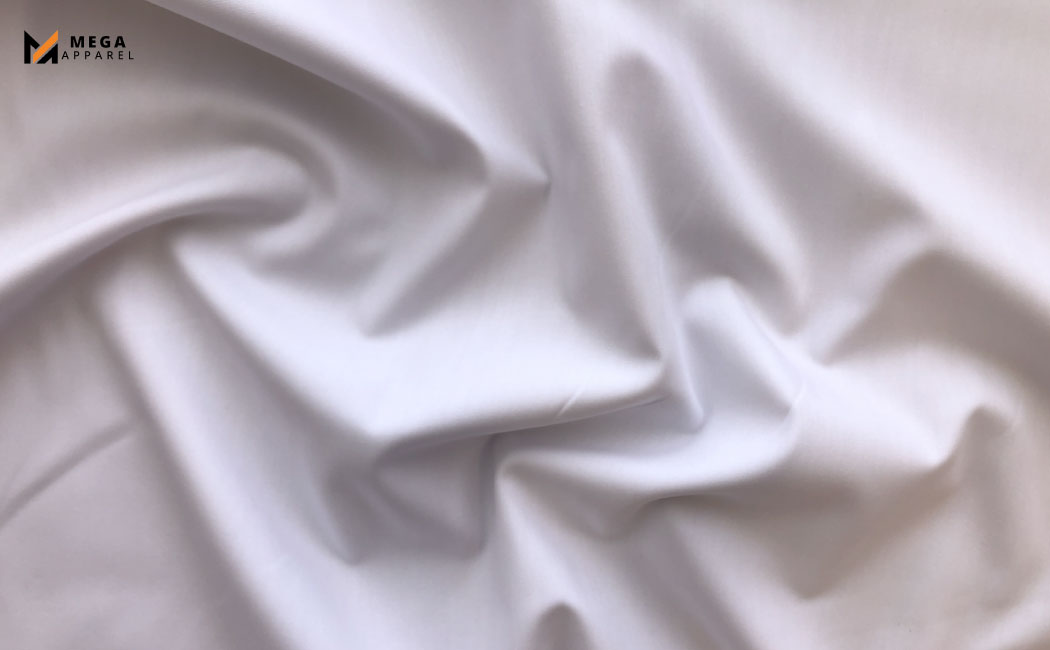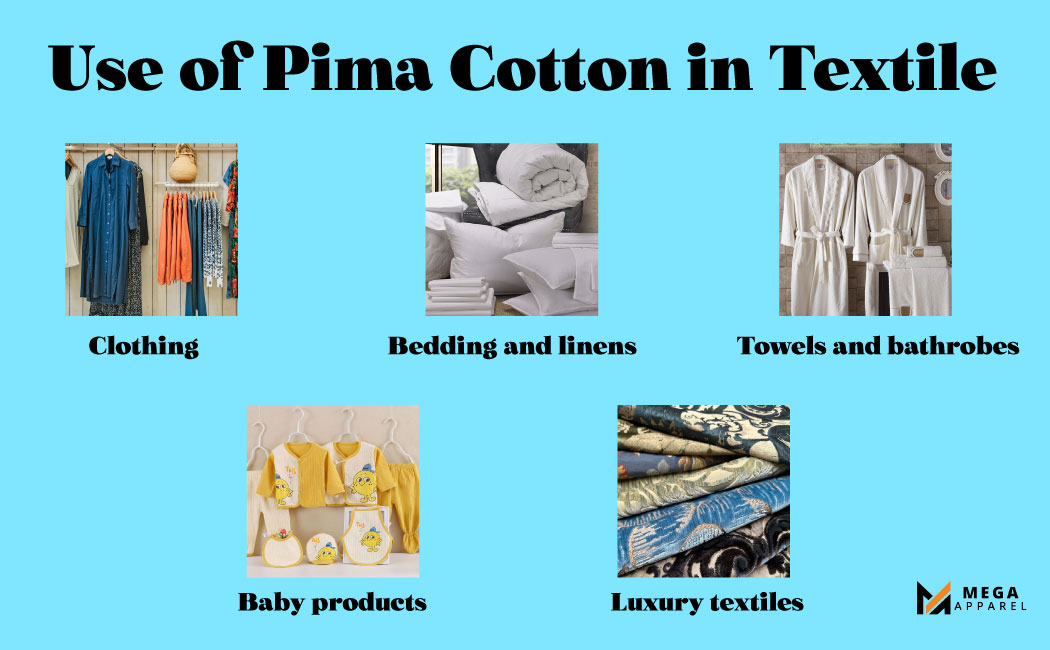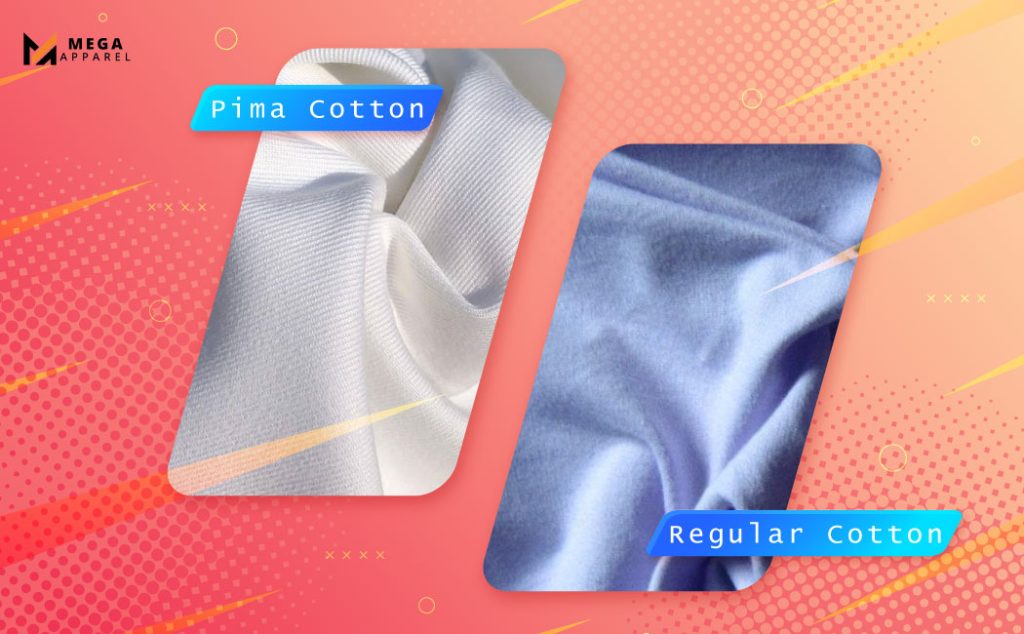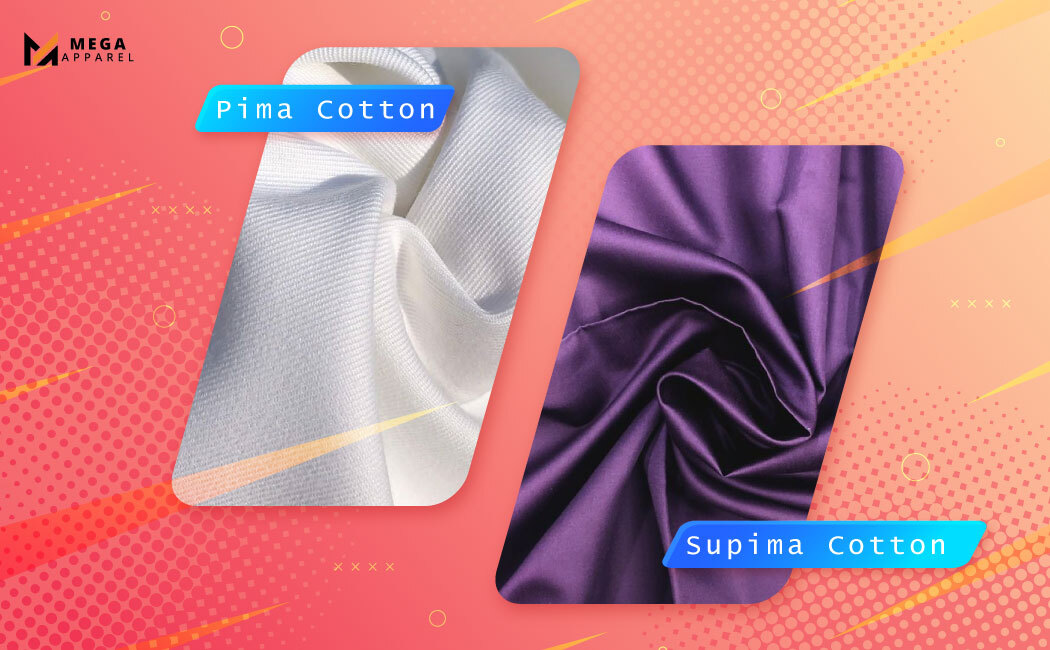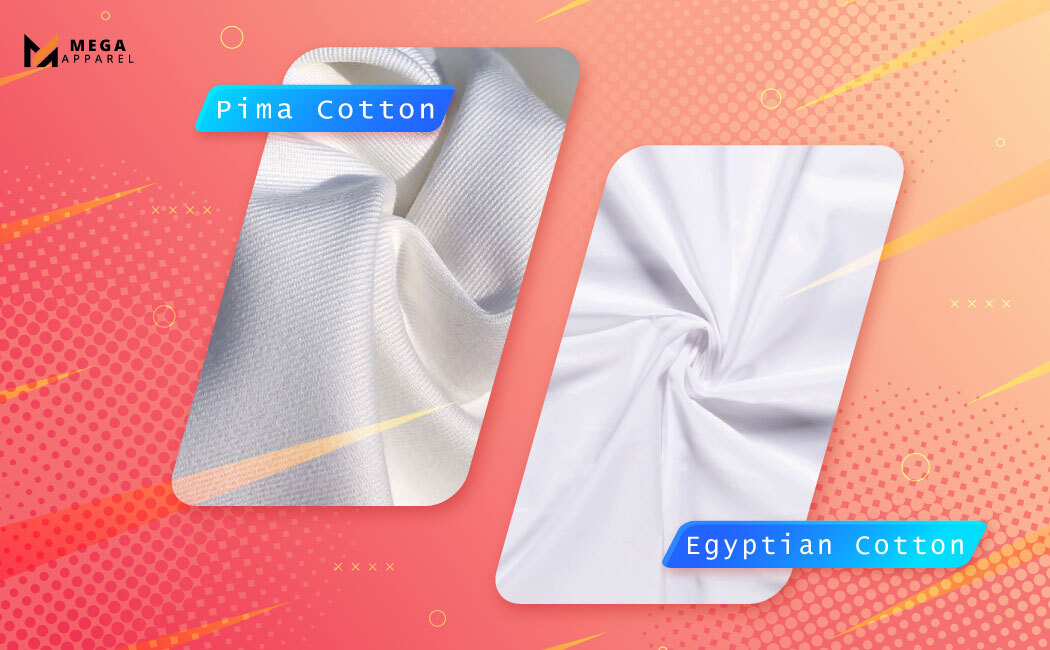Pima cotton is a premium kind of cotton renowned for its plush texture, resilience, and softness. It has the name of the Pima Native American tribe, who were the first in the Southwest of the United States to farm this kind of cotton. Pima cotton produces a smoother, more glossy fabric because its fibers are longer than those of standard cotton.
Because of its longer staple length, Pima cotton tends to produce textiles that are more resistant to wrinkling and are less likely to pill, fray, or rip. It’s frequently utilized in luxury apparel, bedding, and other textiles where comfort and quality are important considerations.
Where Is Pima Cotton Found?
Curious people often ask where pima cotton is grown. Well, it is mostly grown in areas with high temperatures and extended growing seasons because these conditions promote the development of the crop’s distinctively long fibers.
Although it is grown around the world, its origins are in the southwestern United States, specifically in Arizona and California. Pima cotton has grown to be a major crop in Peru, especially in the northern coastal districts, where the climate is favorable for its cultivation.
Pima cotton is also grown in Egypt, Australia, Israel, and several regions of Central and South America. These areas provide the ideal growing climate for this high-quality cotton type, with plenty of sunshine, moderate rainfall, and well-drained soil.
Because pima cotton is so widely available, companies that value its superior quality and rich texture in textile production can always get it.
Uses of Pima Cotton in Textile
Pima cotton’s exceptional quality makes it suitable for a wide range of products, including:
1. Clothing: Pima cotton is commonly used to make luxurious and soft clothing items such as T-shirts, dress shirts, polo shirts, underwear, socks, dresses, skirts, and trousers. Pima cotton’s breathable nature and smooth texture make it ideal for garments worn close to the skin.
2. Bedding and linens: Pima cotton is often used to produce high-quality bed sheets, pillowcases, duvet covers, and towels. Its softness, durability, and ability to maintain color and shape through multiple washes make it a popular choice for luxury bedding and linens.
3. Towels and bathrobes: Pima cotton’s absorbent properties make it well-suited for towels and bathrobes. Its plush feel and ability to retain its softness even after repeated use and washing contribute to a luxurious bathing experience.
4. Baby products: Pima cotton is gentle on sensitive skin, making it an excellent choice for baby clothing, blankets, bibs, and bedding. Its softness and breathability help keep babies comfortable and cozy.
5. Luxury textiles: Pima cotton is also used to produce high-end textiles such as drapes, upholstery fabrics, and decorative pillows. Its smooth texture and ability to hold vibrant colors make it a favored material for upscale home decor.
Overall, Pima cotton’s versatility, durability, and luxurious feel make it a popular choice for a wide range of products across the textile industry.
How Is Pima Cotton Fabric Made?
Pima cotton fabric is made through a series of processes, which are:
1. Harvesting:
Pima cotton plants are grown and cultivated until the bolls, which contain the cotton fibers, are ready for harvesting. The cotton is typically harvested mechanically or by hand.
2. Ginning:
After harvesting, the cotton fibers are separated from the seeds and other plant materials in a process called ginning. This step helps to clean and prepare the fibers for further processing.
3. Spinning:
The cleaned cotton fibers are then spun into yarns using spinning machines. Pima cotton’s long staple length allows for the production of fine and strong yarns, which contribute to the fabric’s luxurious feel and durability.
4. Weaving or knitting:
The spun yarns are woven on looms or knitted on machines to create the desired fabric structure. Weaving produces a fabric with a tighter, more structured feel, while knitting results in a softer, more stretchy fabric.
5. Finishing:
After weaving or knitting, the fabric undergoes various finishing processes to enhance its appearance, texture, and performance. This may include treatments such as dyeing, bleaching, or applying finishes to improve softness, wrinkle resistance, or moisture-wicking properties.
Throughout these steps, careful attention is paid to maintaining the quality and integrity of the pima cotton fibers to ensure that the final fabric retains its luxurious characteristics.
Pima Cotton vs Other Cotton Materials
Pima Cotton and Regular Cotton
Pima cotton, also known as extra-long staple (ELS) cotton, differs from regular cotton in several key aspects. Pima cotton has longer fibers, typically measuring around 1.5 to 2 inches (compared to around 0.75 inches for regular cotton), which contribute to its superior softness, strength, and durability. This longer staple length also results in a smoother and more lustrous fabric with fewer protruding fibers, giving Pima cotton garments a luxurious feel.
Regular cotton, on the other hand, has shorter fibers and is more commonly produced worldwide. While still comfortable, regular cotton fabric may feel slightly rougher and less durable compared to Pima cotton. Additionally, pima cotton tends to have better color retention and resistance to pilling, making it a preferred choice for high-quality clothing and linens.
Overall, Pima cotton offers a superior combination of softness, strength, and longevity compared to regular cotton, making it a premium choice for discerning consumers seeking luxury and durability in their textiles.
Pima Cotton vs Supima Cotton:
There are distinctions between Pima and Supima cotton, two extra-long staple (ELS) cotton varieties renowned for their superior quality. While Supima cotton is precisely defined as cotton farmed in the United States and certified by the Supima Association, guaranteeing it satisfies high quality criteria, Pima cotton is any cotton with long fibers.
Supima cotton undergoes rigorous quality control measures, including fiber length, strength, and color, guaranteeing superior performance and durability. While Pima cotton can come from various regions, Supima cotton is exclusively grown in the southwestern United States, primarily in California and Arizona.
Both types of cotton offer softness, strength, and a luxurious feel, but Supima cotton is often considered the pinnacle of quality due to its stringent production standards and traceability. As a result, Supima cotton products are typically associated with premium brands and higher price points.
Pima Cotton vs Egyptian Cotton
Pima cotton and Egyptian cotton are both renowned for their exceptional quality, but they have differences in origin and characteristics. Pima cotton includes various types of extra-long staple (ELS) cotton grown worldwide, while Egyptian cotton specifically refers to cotton grown in Egypt’s Nile River Valley.
Egyptian cotton is celebrated for its luxurious softness, strength, and lustrous appearance, attributed to the ideal climate and fertile soil of the Nile region. Its long fibers result in smooth, durable fabrics with superior breathability.
Pima cotton, on the other hand, encompasses a broader range of cotton varieties, including those grown in the United States, Peru, and other regions. While Pima cotton shares similar characteristics with Egyptian cotton, including long staple length and softness, the specific qualities can vary depending on the growing conditions and processing methods.
Both types of cotton are prized for their premium feel and durability; however, Egyptian cotton’s reputation for luxury often comes with a higher price tag.
Conclusion
In short, although Pima and Egyptian cotton are highly valued for their superior quality and plush texture, their provenance and unique attributes are different. Because of the ideal temperature and rich soil in the Nile River Valley, Egyptian cotton is highly valued for its unmatched strength, softness, and glossy look.
Conversely, Pima cotton refers to a range of extra-long staple (ELS) cotton cultivars that are cultivated around the globe, such as in Peru, the United States, and other places. While Pima cotton and Egyptian cotton both have long, soft staples, the precise characteristics might differ according to the cultivation environment and the techniques of processing.
Despite these differences, both varieties of cotton provide exceptional comfort and endurance; however, due to its valued reputation, Egyptian cotton is sometimes linked with a higher price range. The decision between Pima and Egyptian cotton ultimately comes down to personal taste and desired qualities in clothes and textiles.
FAQs
1. Is pima cotton good?
Pima cotton is actually very good due to its long fibers, which enhance its quality and hence result in durability, luxurious appeal, and durability.
2. Is pima cotton expensive?
Yes, pima cotton is more costly than regular cotton since it is superior in quality, contributes to its luxurious feel, has good durability, and has longer fibers.
3. Is pima cotton breathable?
Yes, Pima cotton allows air to pass through the fabric to keep the wearer comfortable and cool. Hence, it is sufficiently breathable.
4. How can I tell if a garment is made from real pima cotton?
In order to identify if the garment is made of pima cotton, check a few things:
- Heavy in weight (compared to regular cotton)
- Smoothness in texture (compared to regular cotton)
- Soft feel (compared to regular cotton)
Moreover, conduct a burn test to see if the fabric produces fine ash, because real pima cotton creates fine ash when it gets burned.


